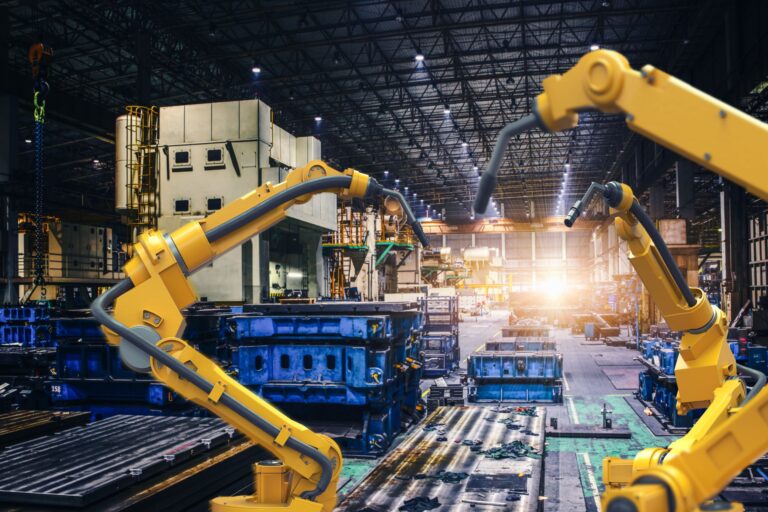In the modern world, sustainability is no longer just an option—it has become a critical factor in the long-term viability of industries, including metal fabrication. The global shift towards more environmentally friendly manufacturing processes has prompted companies in the metalworking sector to adopt practices that not only reduce their environmental impact but also drive economic efficiency. This article explores some of the key global trends in sustainable metal fabrication that are transforming the industry.
Material Efficiency and Waste Minimization
One of the most significant global trends in metal fabrication is the emphasis on material efficiency and the reduction of waste. Traditionally, metalworking has been associated with substantial material loss during processes such as cutting, machining, and welding. However, new techniques, such as laser cutting and CNC machining, are reducing waste by achieving higher precision. These methods allow manufacturers to make the most of every piece of material, optimizing usage and minimizing scrap metal.
Moreover, industries are increasingly prioritizing recycling as part of the production cycle. Scrap metal generated during manufacturing is being recycled more frequently, contributing to the circular economy. Globally, the demand for recycled metals like steel and aluminum is rising, as they offer comparable performance to virgin metals but with a significantly smaller environmental footprint.
Energy Efficiency in Production
The metal fabrication industry has historically been energy-intensive. However, the push towards energy efficiency is gaining momentum as manufacturers seek to reduce their carbon footprint. Across the globe, companies are integrating energy-efficient technologies into their processes. For example, electric arc furnaces (EAFs), which use recycled steel, are far more energy-efficient than traditional blast furnaces. This shift not only reduces energy consumption but also aligns with the global push to lower greenhouse gas emissions.
In addition, the adoption of renewable energy sources such as solar and wind power for factory operations is becoming more common. Countries around the world are incentivizing the use of renewable energy, encouraging metal fabricators to transition to greener energy alternatives.
Water Conservation and Treatment
Water plays an essential role in metal fabrication processes, particularly in cooling, cutting, and cleaning operations. However, water conservation is becoming a critical concern as global water resources face increasing pressure. Companies worldwide are implementing closed-loop water systems, where water is reused within the same processes, minimizing the amount of fresh water required and reducing wastewater output.
Furthermore, advanced water treatment technologies are being employed to filter and purify water used in manufacturing before it is discharged, ensuring that harmful contaminants do not enter local ecosystems. This trend reflects a growing awareness of the need to protect water resources while maintaining production efficiency.
Sustainable Material Sourcing
Another key trend in sustainable metal fabrication is the focus on using materials that are environmentally friendly and responsibly sourced. Globally, there is increasing demand for certified sustainable metals, which ensures that raw materials are extracted and processed in ways that minimize harm to the environment and local communities.
For instance, recycled metals are seeing a surge in popularity, as they offer significant environmental benefits, including reduced mining activity and lower energy consumption in the refining process. Additionally, new materials, such as biodegradable composites and lightweight alloys, are being explored for their potential to improve product performance while reducing environmental impact.
Green Manufacturing Technologies
The global rise of green manufacturing technologies is also shaping the future of metal fabrication. These technologies focus on reducing the environmental footprint of manufacturing processes through innovation. Additive manufacturing (3D printing), for example, has gained popularity due to its ability to create parts with minimal waste. Unlike traditional subtractive processes, 3D printing uses only the material necessary to build a component, significantly reducing material waste.
Moreover, robotic automation is helping to improve the precision and efficiency of metal fabrication processes. By integrating robots into production lines, manufacturers can optimize resource use and reduce energy consumption. Robots are also able to operate with greater consistency, leading to fewer defects and less waste.
Emissions Reduction
Reducing industrial emissions is a top priority in the global effort to combat climate change, and metal fabrication is no exception. Innovations in clean technologies, such as low-emission furnaces and advanced filtration systems, are helping manufacturers reduce the release of harmful pollutants into the atmosphere.
Countries are also enacting stricter regulations on industrial emissions, which has prompted companies to invest in cleaner production technologies. The use of non-toxic coatings and water-based solvents in finishing processes is becoming increasingly common, helping to reduce volatile organic compound (VOC) emissions and improve air quality.
The Role of Digitalization
The rise of Industry 4.0 technologies, such as Artificial Intelligence (AI), the Internet of Things (IoT), and machine learning, is playing a crucial role in driving sustainability in metal fabrication. These technologies enable manufacturers to monitor their production processes in real time, optimize energy use, and reduce waste. For instance, predictive maintenance systems use sensors to track machine performance, allowing manufacturers to perform maintenance before a breakdown occurs, reducing downtime and material loss.
Global Collaboration and Standards
Finally, the metal fabrication industry is seeing increased global collaboration around sustainability. Governments, businesses, and trade organizations are working together to develop sustainability standards and best practices that can be adopted worldwide. Certifications such as ISO 14001 (environmental management) and ISO 50001 (energy management) are becoming essential benchmarks for companies looking to demonstrate their commitment to sustainable operations.
Conclusion
The global trends in sustainable metal fabrication are reshaping the industry, driving a shift towards more efficient, environmentally friendly practices. From resource efficiency and energy conservation to the adoption of green technologies, metal fabricators are increasingly focused on reducing their environmental impact while maintaining high levels of productivity and profitability.
At SL Industries Ltd., we strive to follow these global trends, integrating sustainable practices into our operations to meet the growing demand for eco-friendly products and processes. As the world continues to evolve towards a more sustainable future, we remain committed to staying at the forefront of innovation in metal fabrication.






